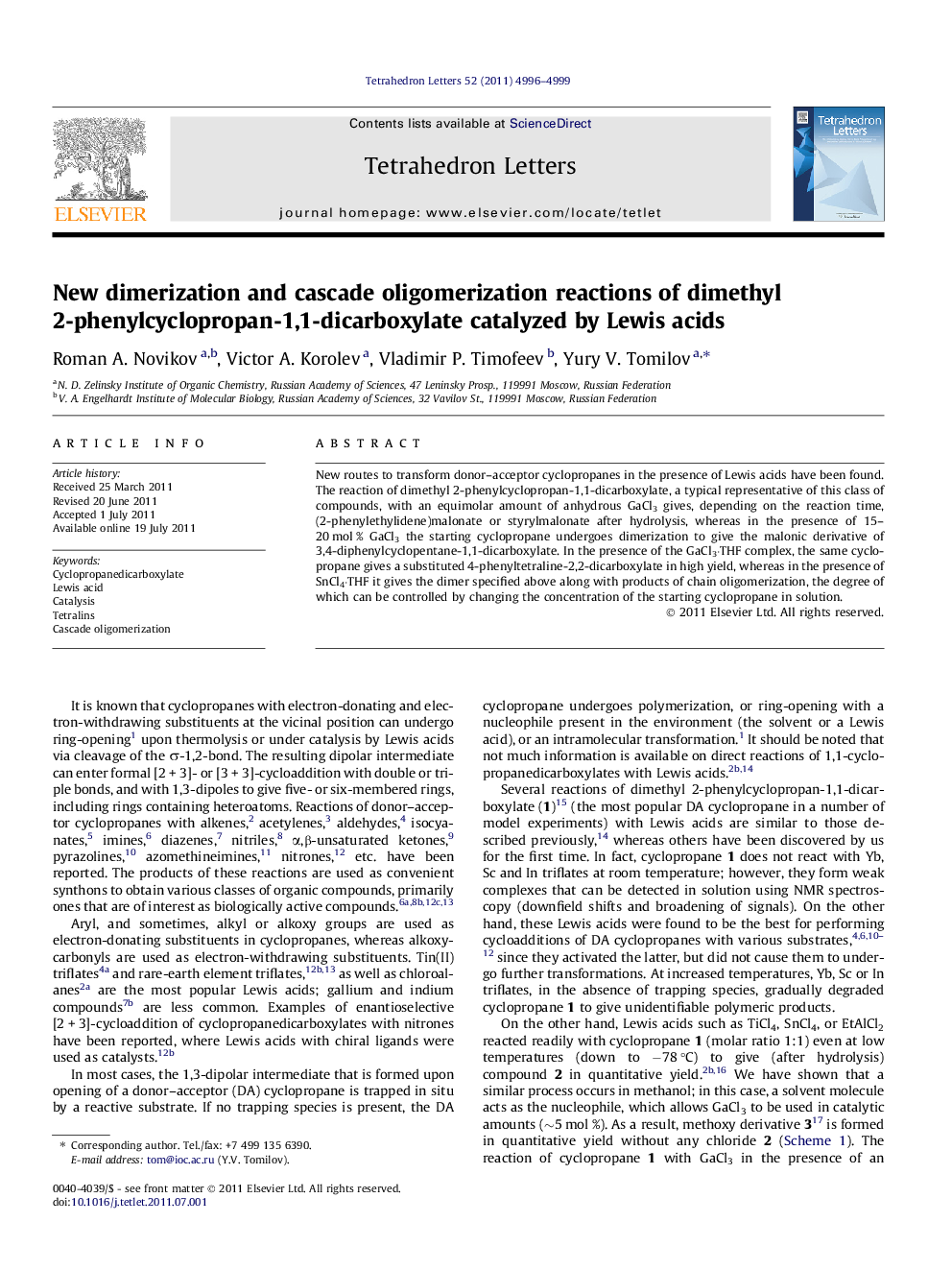| Article ID | Journal | Published Year | Pages | File Type |
|---|---|---|---|---|
| 5266831 | Tetrahedron Letters | 2011 | 4 Pages |
Abstract
New routes to transform donor-acceptor cyclopropanes in the presence of Lewis acids have been found. The reaction of dimethyl 2-phenylcyclopropan-1,1-dicarboxylate, a typical representative of this class of compounds, with an equimolar amount of anhydrous GaCl3 gives, depending on the reaction time, (2-phenylethylidene)malonate or styrylmalonate after hydrolysis, whereas in the presence of 15-20 mol % GaCl3 the starting cyclopropane undergoes dimerization to give the malonic derivative of 3,4-diphenylcyclopentane-1,1-dicarboxylate. In the presence of the GaCl3·THF complex, the same cyclopropane gives a substituted 4-phenyltetraline-2,2-dicarboxylate in high yield, whereas in the presence of SnCl4·THF it gives the dimer specified above along with products of chain oligomerization, the degree of which can be controlled by changing the concentration of the starting cyclopropane in solution.
Keywords
Related Topics
Physical Sciences and Engineering
Chemistry
Organic Chemistry
Authors
Roman A. Novikov, Victor A. Korolev, Vladimir P. Timofeev, Yury V. Tomilov,
